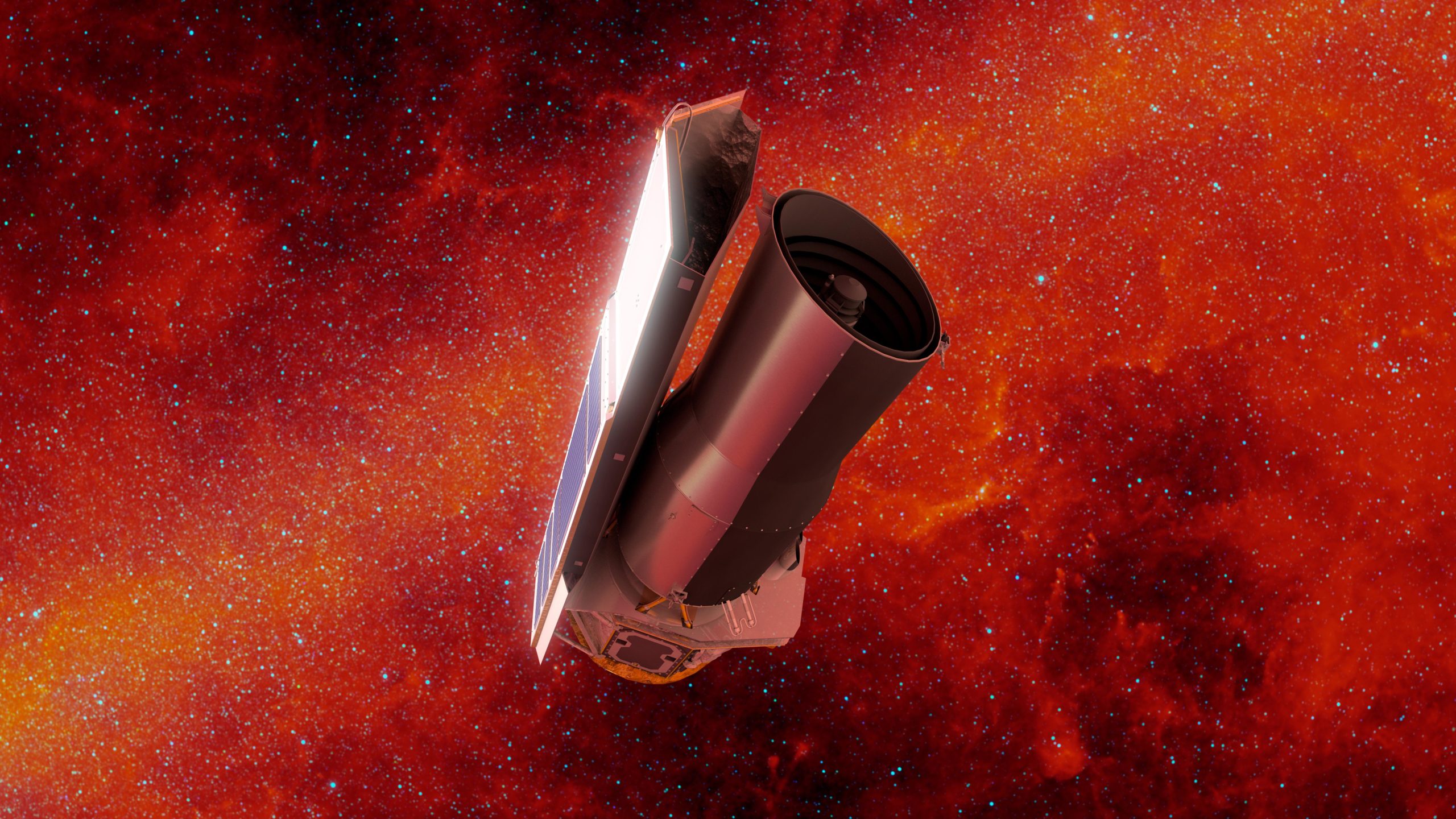JANUARY 26, 1978: The International Ultraviolet Explorer (IUE) spacecraft is launched from Cape Canaveral, Florida. Throughout its 18 years of operations IUE conducted observations of many astronomical objects, including several comets.
JANUARY 27, 2016: A team of astronomers led by Tabitha Boyajian of Yale University publishes their paper on the star KIC 8462852 – unofficially dubbed “Boyajian’s Star” – based upon observations obtained by the Kepler spacecraft. The star had shown – and continues to show – large and irregular variations in brightness unlike those seen in any other star. Among the more likely explanations that have been proposed for these brightness variations is a large swarm of comets. The subject of exocomets, including those possibly orbiting KIC 8462852, is covered in this week’s “Special Topics” presentation.
JANUARY 27, 2020: The main-belt asteroid (28758) 2000 HE10 will occult the 7th-magnitude star HD 50482 in Gemini. The predicted path of the occultation passes over central Greece (just north of Athens), far southern Albania, eastern and northern Italy (including Florence), central France, far southwestern England, southern Ireland, far southern Greenland, the central northern regions of Nunavut, the Northwest Territories, and Yukon in Canada, and southern Alaska.
JANUARY 28, 1661: A bright comet first observed six days later by Polish astronomer Johannes Hevelius passes through perihelion at a heliocentric distance of 0.513 AU. Three and a half centuries later this comet would be found to be identical to a comet now known as 153P/Ikeya-Zhang, which is a future “Comet of the Week.”
JANUARY 28, 2019: A team led by Ko Arimatsu of the National Astronomical Observatory of Japan reports their discovery of a 2.6-km wide Kuiper Belt object by means of an occultation of a star detected by a network of two small telescopes. The Kuiper Belt is the subject of a future “Special Topics” presentation.
JANUARY 29, 2003: Comet Kudo-Fujikawa C/2002 X5 passes through perihelion at a heliocentric distance of 0.190 AU. Observations of the comet obtained when it was near perihelion by instruments aboard the SOlar and Heliospheric Observatory (SOHO) spacecraft helped establish a connection between comets in our solar system and exocomets, and have accordingly helped in understanding the processes by which planetary systems form. The subject of exocomets is covered in this week’s “Special Topics” presentation.
JANUARY 30, 1931: The near-Earth asteroid (433) Eros passes 0.174 AU from Earth. Parallax observations obtained during this approach helped refine the exact size of an Astronomical Unit, which set the standard for this measurement for the next few decades. This and other studies of Eros were covered in last week’s “Special Topics” presentation.
JANUARY 30, 1996: A Japanese amateur astronomer, Yuji Hyakutake, discovers a comet (designated C/1996 B2) that two months later would pass close to Earth and become one of the brightest and most spectacular comets of the latter 20th Century. Comet Hyakutake is a future “Comet of the Week.”
JANUARY 30, 2008: The tiny asteroid 2007 WD5, approximately 50 meters in diameter and discovered on November 20, 2007 by Andrea Boattini during the course of the Catalina Sky Survey based in Arizona, passes extremely close to Mars. The exact “miss distance” is uncertain but the most likely value is around 0.00015 AU (6.5 Mars radii). It has not been seen since.

JANUARY 30, 2020: The infrared-sensitive Spitzer Space Telescope, launched in 2003, is expected to be deactivated. Among its many studies, Spitzer has taken infrared images of numerous comets, some of which are featured in various presentations of “Ice and Stone 2020.”
JANUARY 31, 1786: Comet 2P/Encke, discovered two weeks earlier, makes its first known passage through perihelion at a heliocentric distance of 0.336 AU. It will be making a return later this year and is a future “Comet of the Week.”
JANUARY 31, 2020: The main-belt asteroid (198) Ampella will occult the 7th-magnitude star HD 59150 in Gemini. The predicted path of the occultation crosses the southern and central U.S. from southeastern Georgia to northern California and central Honshu in Japan.
JANUARY 31, 2026: NASA’s Psyche mission, currently scheduled for launch in August 2022, is expected to arrive at its destination, the main-belt asteroid (16) Psyche. The Psyche mission is among those that will be discussed in a future “Special Topics” presentation on upcoming missions, while Psyche itself, which has a high metallic content, is discussed in a future “Special Topics” presentation on asteroid mining. (16) Psyche will be at opposition late this year and should reach 9th magnitude around that time.
FEBRUARY 1, 1981: Italian astronomers Andrea Carusi and Giovanni Valsecchi publish a paper describing how comets can be temporarily captured as satellites of Jupiter. Their primary example is Comet 82P/Gehrels 3, which had been such a satellite between 1967 and 1973 (prior to its discovery in 1975) and which will be a temporary satellite of Jupiter again for a few years around 2060.
FEBRUARY 1, 1994: Several U.S. Defense Department satellites detect a bright airburst explosion near the southwestern Pacific Ocean island of Kusaie, which was caused by a small impacting asteroid. Two fishermen on the ground witnessed the bright fireball. This event, which allegedly caused then-U.S. President Bill Clinton to be woken up by his Defense staff, and other similar events are discussed in a future “Special Topics” presentation.
FEBRUARY 1, 2002: Japanese amateur astronomer Kaoru Ikeya and Chinese amateur astronomer Daqing Zhang independently discover a comet which becomes moderately conspicuous to the unaided eye two months later. Comet Ikeya-Zhang was found to be identical to a comet observed in 1661 by the Polish astronomer Johannes Hevelius, and becomes the longest-period comet to be observed on two different returns. Now known as Comet 153P/Ikeya-Zhang, it is a future “Comet of the Week.”
More from Week 5:
Comet of the Week Special Topic Free PDF Download Glossary
Ice and Stone 2020 Home Page


